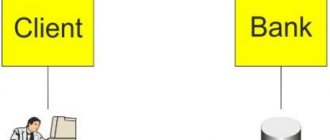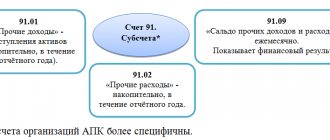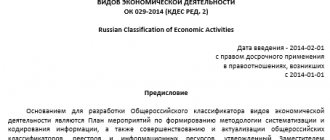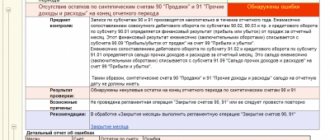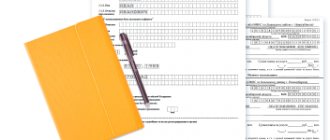Organizations have the right to independently qualify income, taking into account its nature, conditions of receipt, as well as the direction of the business. According to the Accounting Regulations “Income of the Organization” PBU 9/99, approved by Order of the Ministry of Finance dated May 6, 1999 No. 32n, they recognize an increase in economic benefits as a result of the receipt of assets (money or other property) and (or) repayment of liabilities, leading to an increase capital of the organization. At the same time, contributions from property owners do not count as income.
Meanwhile, not all funds and property received by the organization are income. The following are not considered by them: amounts of VAT, excise taxes, export duties, etc.; payments under commission agreements, agency and other similar agreements; advance payment for products, goods, works, services; advances; makings; payments under collateral, credit, loan agreements.
The criteria for classifying receipts as income from ordinary activities must be fixed in the company’s accounting policies. As a rule, they are amounts received from the main type of activity. This is revenue from the sale of goods, works or services. If a company has several lines of business, then the so-called “materiality threshold” of “ordinary” income is used; as a rule, it is 5 percent.
Conditions of recognition
Paragraph 12 of PBU 9/99 establishes five conditions, under the simultaneous fulfillment of which revenue is recognized in accounting: the organization has the right to receive it, the company’s revenue is obtained from a specific agreement or is confirmed in another appropriate manner; its amount can be determined; there is confidence that as a result of a specific transaction there will be an increase in the economic benefits of the organization; the right of ownership (possession, use and disposal) of the product (goods) has passed from the company to the buyer or the work has been accepted by the customer (service provided); the costs of the operation can be determined.
If at least one of the above conditions is not met for the money and other assets received by the company, not revenue is recognized in accounting, but accounts payable.
Amounts from the provision for temporary use of company assets for a fee, rights arising from patents for inventions, industrial designs and other types of intellectual property and from participation in the authorized capital of other organizations are recognized as income if only three conditions are simultaneously met: the company has the right to receive proceeds , arising from a specific contract or otherwise confirmed in an appropriate manner; the amount of earnings can be determined; there is confidence that a particular transaction will result in an increase in the economic benefits of the organization.
Organizational expenses: concept, types
First of all, it is necessary to clarify the difference between such concepts as “expenses” and “costs” - they are often confused, although there is a fundamental difference between these terms:
| Difference | Expenses | Expenses |
| Definition of the term | This is an indicator of the extent to which there has been a decrease in economic benefits due to the emergence of liabilities and the disposal of certain assets, except in cases of reduction in the size of deposits by decision of the owners of property assets. In other words, it is the cost of resources expended in order to make a profit in a certain period of time. | This is an assessment of the cost of those resources that were spent by the company in the process of carrying out its activities. |
| Distinctive features | This does not take into account cases of asset disposal:
|
|
At any enterprise, expenses are divided into 2 large groups (organizations themselves classify expenses depending on the field of activity, characteristics of work, conditions for spending resources and other criteria):
- Expenses for ordinary activities (usually costs associated with the purchase of raw materials and inventories, with the process of processing inventories during the production process and sales, with the sale of goods and manufactured products):
- material costs;
- depreciation deductions;
- for remuneration of personnel;
- on social media needs;
- other expenses for the production and sale of goods/services.
- Other expenses (not related to the production and sale of goods/products - for example, related to the depreciation of assets, with the payment of fines/penalties/penalties, with overdue accounts receivable, with losses recognized in the current period from previous periods, with interest on loans, with expenses for payment of banking services, emergency situations, etc.).
Exactly what expenses will be classified in the first group depends on the company’s field of activity (for example, companies engaged in trade and renting out apartments will have completely different classifications of expenses). Consider a list of ways to reduce costs:
| Cost Reduction Approach | Explanations |
| Reducing labor costs | You can reduce employee salary costs by transferring some individual job functions to freelancing and outsourcing. |
| Reducing advertising costs | ● reducing advertising costs; ● payment for advertising by barter; ● selection of the most effective methods of advertising. |
| Reduce production costs |
○ reduction in the number of vehicles; ○ hiring a logistician, getting advice from a logistics office about reducing costs; ○ transfer of functions of the motor transport workshop to outsourcing.
○ payment for housing and communal services for 2 meters in order to use new tariffs; ○ economical use of resources.
○ change of place of work of the enterprise; ○ review of the lease agreement; ○ sublease of unclaimed space. |
| Reducing the share of material costs | ● Revision of the terms of contracts with current counterparties; ● making purchases together with another buyer from the same supplier of materials in order to receive a wholesale discount; ● search for more profitable counterparties; ● use of less expensive materials in production (if possible, without compromising product quality). |
| Reducing the cost of maintaining property unclaimed during production | ● sale of depreciated fixed assets instead of write-off; ● sale of materials generated during dismantling. |
"Regular" accounting
Information about “ordinary” income and expenses, as well as the financial result for them, is reflected in account 90 “Sales” in correspondence with the debit of account 62 “Settlements with buyers and customers”. Subaccount 90-1 “Revenue” is intended for revenue accounting.
EXAMPLE An organization received revenue in the amount of 1,770,000 rubles (including VAT - 270,000 rubles).
The cost of goods sold was 900,000 rubles, the cost of their sale was 255,000 rubles. The following entries must be made in accounting: DEBIT 62 CREDIT 90-1
– 1,770,000 rubles – revenue from the sale of goods is reflected;
DEBIT 90-3 CREDIT 68, subaccount “Calculations for VAT”
– 270,000 rubles – VAT charged;
DEBIT 90-2 CREDIT 41
– 900,000 rubles – cost of goods sold is written off;
DEBIT 90-2 CREDIT 44
– 255,000 rubles – sales expenses are written off;
DEBIT 90-9 CREDIT 99
– 345,000 rubles (1,770,000 – 270,000 – 900,000 – 255,000) – profit from sales is reflected.
Other income
The list of other income is fixed in paragraph 7 of PBU 9/99 and is open. These include: revenues associated with the provision of the organization's assets for temporary use for a fee; fines, penalties, penalties for violation of contract terms; profit of previous years identified in the reporting year; exchange differences.
To summarize information on other income and expenses, account 91 “Other income and expenses” is intended (Chart of accounts for accounting financial and economic activities of organizations, approved by Order of the Ministry of Finance dated October 31, 2000 No. 94n).
There are subaccounts: 91-1, 91-2 “Other expenses”, 91-9 “Balance of other income and expenses”. I recommend opening them too.
Accounting in account 91 is carried out cumulatively, that is, during the reporting year, entries are made in subaccounts 91-1 and 91-2. Every month you need to determine the balance of other income and expenses. At the end of the reporting year, subaccounts (with the exception of subaccount 91-9) are closed.
The procedure for recognizing other income in accounting is prescribed in paragraph 16 of PBU 9/99. If all five conditions that I have already described above are met, other income is recognized in accounting in the following order. With regard to amounts from the sale of fixed assets and other non-monetary assets, products, goods, interest for the provision of funds for use, as well as income from participation in the authorized capital of other companies, a procedure similar to that provided for in paragraph 12 of PBU 9/99 applies. Fines, penalties, penalties for violation of the terms of agreements, as well as compensation for losses caused to the organization, are recognized in the reporting period in which the court made a decision to collect them or in which they were recognized by the debtor. The amounts of accounts payable and depositors must be taken into account in the reporting period in which the statute of limitations has expired; the amount of revaluation of assets - in the reporting period to which the date as of which the revaluation was made; other receipts - as they are formed (identified).
Accounting for income from ordinary activities
Ordinary activities in the field of entrepreneurship are the sale of goods, products, performance of work, provision of services, and income from these operations (hereinafter referred to as revenue) is considered income from ordinary activities. The usual type of activity is enshrined in the organization's charter.
To summarize information about income and expenses associated with ordinary activities, as well as to determine the financial result, account 90 “Sales” is intended. Revenue is recognized in accounting if the following conditions exist:
a) the organization has the right to receive this revenue arising from a specific agreement or confirmed in another appropriate manner;
b) the amount of revenue can be determined;
c) there is confidence that as a result of a specific transaction there will be an increase in the economic benefits of the organization;
d) the right of ownership (possession, use and disposal) of the product has passed from the organization to the buyer or the work has been accepted by the customer (service provided);
e) the costs incurred for this operation can be determined.
If at least one of the above conditions is not met in relation to the funds received by the organization as payment, then the organization’s accounting records recognize accounts payable, not revenue.
An organization may recognize in its accounting revenues from the performance of work, provision of services, sale of products with a long production cycle as the work, service, product is ready or upon completion of the work, provision of service, or production of products in general.
To reflect revenue in accounting, the following entry is used:
| Account correspondence | Contents of operation | |
| Debit | Credit | |
| 62 | 90-1 | Revenue from the sale of products (performance of work, provision of services) is reflected. |
Example 2.1
In 2008, the company received revenue from the sale of goods in the amount of 16,134,802 rubles. (including VAT - RUB 2,460,015). The cost of goods sold amounted to 13,661,316 rubles.
When recognized in accounting, the amount of revenue from the sale of products was reflected by the following entry:
Dt sch. 62-1 “Settlements with buyers and customers”
K-t sch. 90-1 “Sales
— 16129160 rub. — revenue from the sale of goods from the warehouse is reflected;
The amount of the cost of products, works and services sold is debited to the account, subaccount 90-2 “Cost of sales”. At the same time, accounts 20 “Main production”, 41 “Goods”, 43 “Finished products”, 44 “Sales expenses”, 45 “Shipped goods” are credited.
In the case when, in accordance with the accounting policy, a limited cost is calculated, administrative and commercial expenses, as conditionally constant ones, are subject to debit to account 90 with credit to accounts 26 “General expenses” and 44.
At the same time, the accounting records reflect the amount of taxes and fees, the payment obligations of which arise for the enterprise at the time of recognition of sales revenue:
Debit 90-3 “Tax Credit 68” Calculations
on value added" for taxes and fees";
Debit 90-4 “Excise taxes” Credit 76 “Settlements with different
debtors and creditors."
Accounted for in the debit of account 44, the amounts of expenses related to products sold are charged monthly to subaccount 90-2.
In organizations engaged in retail trade and keeping records of goods at sales prices, at the end of the month the amount of trade margins related to the goods sold is reversed.
Account 90 is used not only to calculate the sales result, but also to generate cumulative totals for the profit and loss statement.
At the end of each month, subaccount 90-9 “Profit / loss from sales” is closed by transferring amounts to account 99 “Profit and loss”. However, all subaccounts of this account have a debit or credit balance, the value of which accumulates starting from January of the reporting year.
When preparing annual financial statements, after transferring the balance from subaccount 90-9 to account 99, final entries are made for closing all other subaccounts of account 90. To do this, the corresponding balances are written off from all subaccounts to subaccount 90-9. Subaccounts 90-2, 90-3, 90-4, 90-5 “Export duties” are closed with credit entries to the debit of subaccount 90-9. The amount from the debit of subaccount 90-1 is written off to the credit of subaccount 90-9. As a result of the entries made, as of January 1 of the new year, none of the subaccounts of account 90 had a balance.
Analytical accounting in account 90 is maintained for each type of goods sold, work performed, services provided, etc. In addition, analytical accounting can be kept for this account by sales regions and other areas (segments of activity) provided for by the organization’s accounting policy.
The correspondence of accounts for ordinary activities is presented in the table:
Table 2.1 - Accounting records for determining the financial result from ordinary activities
| No. | Contents of operation | Account correspondence | |
| debit | credit | ||
| 1 | An invoice was issued to the buyer for the sale of products | 62 | 90/1 |
| 2 | The amount of VAT from the cost of products sold has been allocated | 90/3 | 68 |
| 3 | Cost of goods sold written off | 90/2 | 43 |
| 4 | Costs associated with the sale of products are reflected | 44 | 76 |
| 5 | The amount of VAT on the cost of services has been allocated | 19 | 76 |
| 6 | Sales expenses written off | 90/2 | 44 |
| 7 | Revenue received from product sales | 50,51 | 62 |
| 8 | The VAT amount was transferred to the budget | 68 | 51 |
| 9 | Profit from product sales determined | 90 | 99 |
| 10 | Loss from product sales determined | 99 | 90 |
| 11 | Profit tax accrued | 99 | 68 |
| 12 | The balance sheet was reformed (retained earnings) | 99 | 84 |
| 13 | Balance sheet reformation carried out (uncovered loss) | 84 | 99 |
Example 2.2
In February 2009, the enterprise TPK SpetsKrovDesign LLC received revenue from the sale of products and goods in the amount of 1,023,000 rubles, incl. VAT 167,500 rub. and sales tax 18,000 rubles. In the accounting records of TPK SpetsKrovDesign LLC, the receipt of revenue was reflected in the following accounting entries.
L-t 51.50 K-t 62
– 1023000 rub. – paid for products (goods) by buyers;
D-t 62 K-t 90
– 1023000 rub. – revenue received from the sale of products (goods);
D-t 90/2 K-t 43 (41)
– 790,000 rub. – the cost of production (cost of goods) is written off;
D-t 90/3 K-t 68/2
– 167500 rub. – VAT is charged;
D-t 90/6 K-t 68/5
– 18,000 rub. – sales tax is charged;
D-t 90/9 K-t 99
– 65482 rub. – the financial result from the sale of products (goods) is determined;
Accounting for other income
The composition of other income is determined by PBU 9/99.
Other income also includes income arising as a consequence of emergency circumstances of economic activity (natural disaster, fire, accident, nationalization, etc.): the cost of material assets remaining from the write-off of assets unsuitable for restoration and further use, etc.
Accounting for income from the sale of assets (except for finished products and goods). When depreciable property is disposed of due to sale, write-off due to the end of its useful life and for other reasons, gratuitous transfer, the amount of depreciation of fixed assets and intangible assets is written off to the debit of accounts 02 “Depreciation of fixed assets”, 05 “Depreciation of intangible assets” from the credit of accounts 01 “Fixed assets” and 04 “Intangible assets”. The residual value of fixed assets and intangible assets is written off from the credit of accounts 01 and 04 to the debit of account 91 “Other income and expenses.” All expenses associated with the disposal of depreciable property (including VAT on sold property) are also written off to the debit of account 91.
When materials and other non-depreciable property are disposed of due to sale, write-off due to damage, or gratuitous transfer, their value is written off to the debit of account 91. The amount of debt of buyers for the sold property is reflected in the debit of account 62 “Settlements with buyers and customers” and the credit of account 91.
When carrying out transactions on contributions to the authorized capitals of other organizations and on contributions of participants of a simple partnership to the common property of partners in non-monetary means, a difference usually arises between the value of the transferred property and the agreed upon assessment of the contribution. This difference is reflected depending on its value in the credit or debit of account 91 (the excess of the agreed value over the accounting value is reflected in the debit of account 58 “Financial investments” and the credit of account 91; the opposite ratio is in the debit of account 91 and the credit of account 58).
Income from participation in other organizations can be taken into account:
1) based on the actual receipt of funds;
2) by preliminary accrual of income and entries in accounts.
In the first option, as funds are received, accounts 50, 51, 52, 55 are debited and account 91 “Other income and expenses” is credited.
In the second option, accrued income is recorded using the following accounting entry:
Debit of account 76 “Settlements with various debtors and creditors” - for the amount of income from contributions to the authorized capital of other organizations, rent and dividends
Credit to account 91 “Other income and expenses” - for the entire amount of accrued income
Received income payments are reflected in the debit of cash accounting accounts (50, 51, 52, 55) and the credit of account 76.
Interest received for the provision of an organization's funds for use is recorded in accounting records in the same manner as income from participation in other organizations. Interest paid for the provision of an organization's funds for use is usually written off as a debit to account 91 “Other income and expenses” from the credit of cash accounting accounts.
Deductions to valuation reserves (for the reduction in the value of tangible assets, for securing investments in securities, for doubtful debts) are reflected in the debit of account 91 and the credit of accounts 14 “Reserves for the decrease in the value of tangible assets”, 59 “Reserves for the depreciation of investments in securities” and 63 “Provisions for doubtful debts”. Unused reserves in the period following the period of their creation are written off to the debit of accounts 14, 59 and 63 from the credit of account 91.
Proceeds from the payment of fines, penalties, various penalties and other types of sanctions are reflected in the credit of account 91 “Other income and expenses” and in the debit of the cash and settlements with debtors accounts.
Profit from previous years identified in the reporting year is reflected in the debit of account 51 “Current account” and the credit of account 91 “Other income and expenses”.
Amounts of accounts payable and depositors for which the statute of limitations has expired are written off to the debit of account 76 and the credit of account 91.
Positive exchange rate differences, depending on the accounting object, are recorded in the following accounting entries:
Debit account 58 “Financial investments” - for the difference on transactions with financial investments
Debit accounts 50 “Cash”, 52 “Currency account” - for the difference in funds in foreign currency
Debit of account 71 “Settlements with accountable persons” (for transactions of issuing currency for reporting) and other accounts
Account credit 91
For debts to suppliers and contractors, a positive exchange rate difference is reflected in the credit of account 91 and the debit of account 60 “Settlements with suppliers and contractors”.
The amounts of revaluation of assets are written off from the credit of account 91 to the debit of the asset accounting accounts.
Analytical accounting for account 91 is carried out for each type of other income. At the same time, the construction of analytical accounting for other income related to the same financial and business transaction should ensure the ability to identify the financial result for each operation.
The correspondence of accounts for other types of activities is reflected in the table.
Table 2.2 - Accounting entries for other transactions
| No. | Contents of operation | Account correspondence | |
| debit | credit | ||
| 1 | Income from property rental is reflected | 76 | 91/1 |
| 2 | Costs associated with the provision of property for rent are reflected | 91/2 | 02,10,7069 |
| 3 | An invoice was issued to the buyer for the sale of other property (fixed assets, intangible assets, materials) | 62 | 91/1 |
| 4 | The amount of VAT from the cost of sold property has been allocated | 91/2 | 68 |
| 5 | Depreciation of fixed assets is written off upon disposal | 02 | 01 |
| 6 | The residual value of fixed assets is written off | 91/2 | 01 |
| 7 | Amortization of intangible assets is written off upon disposal | 05 | 04 |
| 8 | The residual value of intangible assets is written off | 91/2 | 04 |
| 9 | Dividends accrued according to the annual meeting of shareholders | 76 | 91/1 |
| 1 | The amount of income tax withheld at the source of payment is reflected | 91/2 | 68 |
| 1 | Wages accrued to workers upon disposal of other property | 91/2 | 70 |
| 1 | Payroll taxes accrued | 91/2 | 69 |
| 1 | Materials used when disposing of other property | 91/2 | 10 |
| 1 | Materials were capitalized as a result of dismantling fixed assets | 10 | 91/1 |
| 1 | Penalties received | 51 | 91/1 |
| 1 | Penalties paid | 91/2 | 51 |
| 1 | Accounts payable and depository debts for which the statute of limitations has expired have been written off | 76 | 91/1 |
| 1 | Uncollectible accounts receivable written off | 91/2 | 76 |
| Continuation of Table 2.1 | |||
| 1 | Interest accrued for using a short-term loan | 91/2 | 66 |
| 2 | Interest accrued for using a long-term loan | 91/2 | 67 |
| 2 | Profit from other operations determined | 91 | 99 |
| 2 | Loss from other operations determined | 99 | 91 |
| 2 | Profit tax accrued | 99 | 68 |
| 2 | The balance sheet was reformed (retained earnings) | 99 | 84 |
| 2 | Balance sheet reformation carried out (uncovered loss) | 84 | 99 |
Example 2.3
In 2009, the company leased the property. This business transaction was reflected in accounting with the following entries:
Dt sch. 62-1 “Settlements with buyers and customers”;
K-t sch. 91-1-4 “Income from rental property”;
in the amount of 10946.24 rubles. (including VAT RUB 1,669.76) – income received from renting out property
Example 2.4
Property tax was assessed for 2009. The following entries were made:
Dt sch. 91-2-1 “Taxes and fees at the expense of other expenses”
K-t sch. 68-11 “Property tax calculations”


